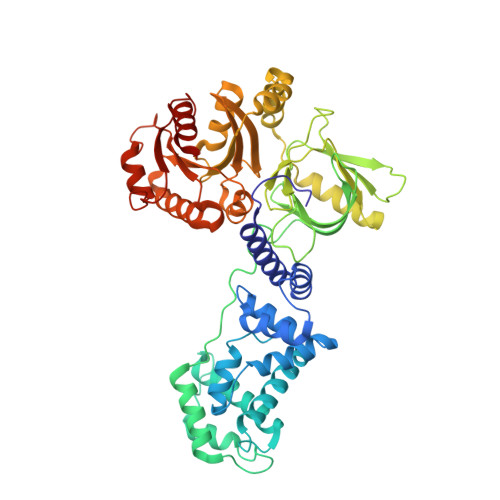Structural Dynamics Control Allosteric Activation of Cytohesin Family Arf GTPase Exchange Factors.
Malaby, A.W., Das, S., Chakravarthy, S., Irving, T.C., Bilsel, O., Lambright, D.G.(2018) Structure 26: 106-117.e6
- PubMed: 29276036
- DOI: https://doi.org/10.1016/j.str.2017.11.019
- Primary Citation of Related Structures:
6BBP, 6BBQ - PubMed Abstract:
Membrane dynamic processes including vesicle biogenesis depend on Arf guanosine triphosphatase (GTPase) activation by guanine nucleotide exchange factors (GEFs) containing a catalytic Sec7 domain and a membrane-targeting module such as a pleckstrin homology (PH) domain. The catalytic output of cytohesin family Arf GEFs is controlled by autoinhibitory interactions that impede accessibility of the exchange site in the Sec7 domain. These restraints can be relieved through activator Arf-GTP binding to an allosteric site comprising the PH domain and proximal autoinhibitory elements (Sec7-PH linker and C-terminal helix). Small-angle X-ray scattering and negative-stain electron microscopy were used to investigate the structural organization and conformational dynamics of cytohesin-3 (Grp1) in autoinhibited and active states. The results support a model in which hinge dynamics in the autoinhibited state expose the activator site for Arf-GTP binding, while subsequent C-terminal helix unlatching and repositioning unleash conformational entropy in the Sec7-PH linker to drive exposure of the exchange site.
Organizational Affiliation:
Program in Molecular Medicine, University of Massachusetts Medical School, Worcester, MA 01605, USA; Department of Biochemistry and Molecular Pharmacology, University of Massachusetts Medical School, Worcester, MA 01655, USA.

















